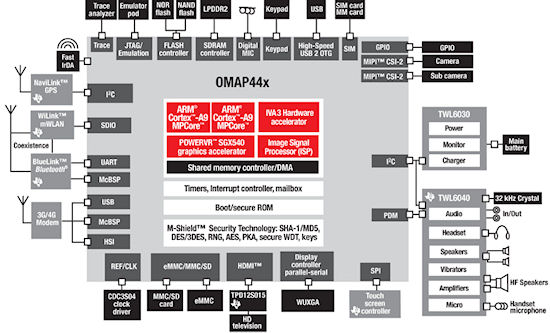Consolation prize
Texas Instruments has been talking up its OMAP4 series for as long as we can remember, and it has now confirmed the BlackBerry Playbook run the OMAP4430.
This will probably be the OMAP4 series' first public outing, as we're not aware of any smartphones yet launched containing the chip and Motorola, which featured OMAP chips in most of its smartphone launches over the past couple of years, seems to have abandoned TI entirely in favour of NVIDIA.
We already knew the Xoom Android 3.0 tablet was running NVIDIA's Tegra 2 SoC, and that wasn't a complete surprise as Google seems to unofficially support that chip for Honeycomb. But a Motorola spokesperson confirmed to us that the recently-launched Atrix also uses Tegra 2.
There's no obvious reason why Tegra 2 should be favoured over OMAP4 by either Google or Motorola. Both have dual-core CPUs based around ARM's Cortex A9 design, while the Imagination Technologies POWERVR SGX540 graphics in the OMAP4430 should be pretty comparable to the best NVIDIA has to offer. Perhaps it's just a matter of timing - Tegra 2 is ready now.
So the BlackBerry PlayBook win is an important one for TI, which must really be feeling the pressure now NVIDIA has stepped up its game to join Qualcomm as a major SoC competitor. "Our team sends huge congratulations to RIM on this innovative product, which we are thrilled to be a part of. The PlayBook puts a solid foot forward for the 2011 tablet market, and we're excited to watch RIM achieve success!" said TI in a blog post.
The arrival of TI's dual-core chip really sets the scene for a battle of the dual-core SoCs this year. It's safe to assume that the team behind Apple's A4 chip have been furiously working on its Cortex A9 successor for the past year, and it will need to be good if the iPad isn't to suffer in comparison with the new Honeycomb tablets.














